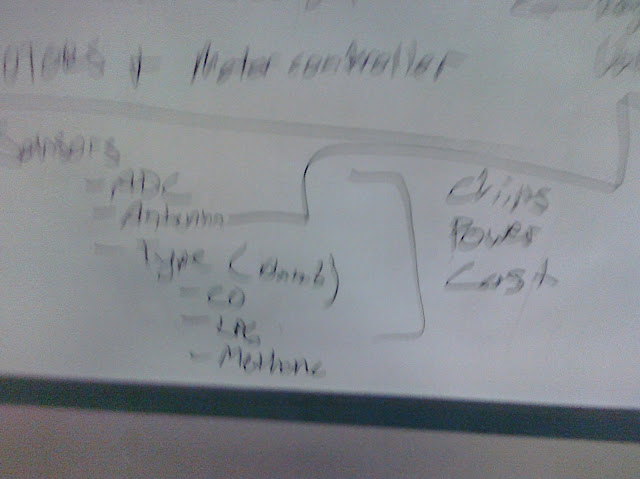- introduce Lehar Gupta- what is she working on ?
- exchange contact info -- Charis will add Lehar to Wiki.
- get her set up on g-docs, dropbox, group, and wiki --
- get her up to speed on our project status
- TI/NI competition = free money and design components
- need to talk to someone ASAP about chemical and radiation testing!!!
- reassign a writing task for paper due next wed?
- work on paper together
- discuss individual research progress (a quick "I have done/not done X,Y,Z this week..." and "I plan to do X,Y,Z next week")
- John is going to add Ethernet to the BOM
- Need to get a GPS of good accuracy -- Capernecos/GPS09159(20 channel)
- new camera option
- needing a remote wireless access point for video (wifi router/server module)
More written notes between Charis and Lahar are below. Lahar will be programming/creating the communication protocol between the robot and the host. Here we discussed what data is being passed and what the communication standard may look like. Furthermore, how to check that the data was not corrupted during transmission (parity bits, CRC, TCP protocol).
We also came to conclusion that the Women in Engineering program at UT might know of some useful resources for our design implementation.





